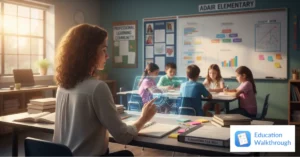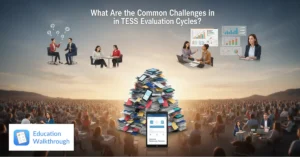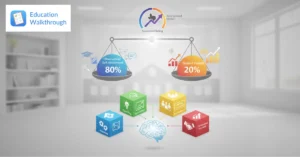Principals are an integral part of the education system. While teachers are in charge of educating students and making sure that they meet education standards, principals are in charge of making sure that the school runs smoothly. It’s an important job with negative connotations today.
The purpose of the education system has changed drastically over the centuries, as state and national educational standards have been implemented and changed. The role of the school principal though has remained consistent as a way to implement educational standards and maintain the stability of the school.
Principals have always done many jobs in the education system. From day to day activities and ensuring that the overall goals of the school are achieved, a principal’s job is never completed. The shifts in the changing role of a school principal have shown that no matter what, a principal is needed in the school.
The Early Days
In the early days of public education, a principal was a teacher with extra administrative duties. This teacher would have to teach a classroom and supervise other teachers. They were connected to their work and communities in ways that modern school principals are not.
Though this may seem like a great, decentralized way to run a school, the role of the principal was ill-defined. Schools were run differently at each location and the teacher in the “principal” role was often overburdened with administrative duties. Since there was no administrative assistance provided at schools, there was little help offered to these teachers.
Since the role of a principal was undefined, students did not have to worry about the principal as they do now. The teacher with this role was in charge of making sure that paperwork was in order, not taking care of students. Students were mostly unconcerned with the extra responsibilities this teacher had.
A shift began to develop as America moved into a bureaucratic framework, setting a principal as a middle manager type in the school. As education reform was implemented in different states and nationwide, the role of the principal was defined to implement the standards set by the district and ensure that teachers were able to teach to those standards.
The Role Now
Today principals can be a misunderstood part of the education system. They’re in charge of the classroom without being in the classroom regularly. This can cause resentment among teachers and confusion with kids about who the principal is. Many kids only see the principal when they’re in trouble.
Principals can struggle to keep up with changing standards and how their role has changed. Even though they work in education, many aspects of their job can seemingly have very little to do with education as they work a more administrative role. They also have to deal with any public pressure as it comes up.
Teachers can struggle as they work with the principal. Teachers may feel like their principal has dual loyalties and doesn’t understand what being in a classroom is like. As principals are expected to help teachers reach their full potential in their manager position, it can be difficult to form a trusting and working relationship.
Students may also struggle to connect with the school principal. Principals today usually only interact with students when there is a problem, painting the principal to many students as a bad guy. The distant role, whether intentional or unintentional, creates problems for principals as they run the school.
Walkthroughs, both formal and informal, can help bridge the gap that teachers can feel with their principal. It gives the principal space and time to see what being a teacher is like and gives the teacher a way to receive constructive feedback.
The Purpose of a Walkthrough
Walkthroughs were not always important to be a successful principal. In the early days of education, standards were minimal or non-existent and the principal was simply another teacher who had extra duties. This is not the case anymore.
Modern-day school principals are responsible for making sure that teachers can teach to their full potential while keeping to current education standards. Conducting walkthroughs makes it easier for principals to focus on what the teacher needs and how education standards look in the classroom.
An informal walkthrough, where a principal observes a classroom unannounced, allows principals to see how the teacher works with their students and the materials naturally. Once this has been established it’s much easier for the principal to tell what the teacher needs to reach their teaching potential.
This will also help principals connect with the students. It will help the principal seem like less of a bad guy and more like a person who is there to help them. Students will be more likely to know that the principal can help them if they see them regularly, helping the culture of the school.
Summary
The role of the school principal has changed a lot over time. From an unofficial role given to a teacher to a full-time job with standards, one aspect has not changed, that the principal is the leader of the school.
That leadership has shifted into an administrative role, causing the distance to form between teachers, students, and the principal. This distance can be fixed with informal classroom walkthroughs or observations. It helps build relationships between the principal and the rest of the school while giving the principal more knowledge about how to help teachers.
The principal’s job is to make sure that educational standards are being met and that teachers have what they need to reach their full potential. Observing classrooms tell principals what is going on in the classroom and how teachers need help without having to ask teachers directly.
Running classrooms without being in a classroom is difficult. Make it easier with walkthroughs that show principals what classrooms look like and how teachers are managing them. Even a few observations can go a long way to making sure that the principal has strong relationships with the rest of the school community in their modern roles.




